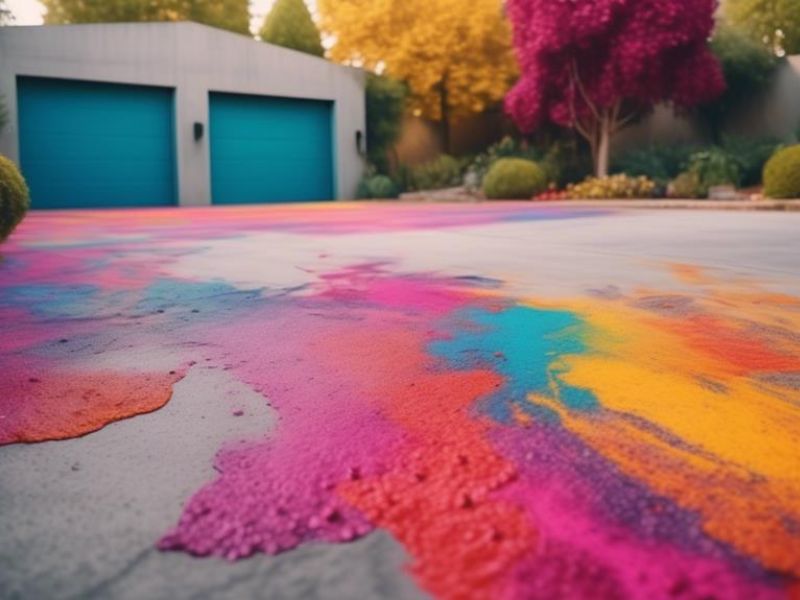
Your driveway is often the first thing visitors notice about your property, yet it's frequently one of the most neglected surfaces. Is painting a driveway a good idea? If you're wondering whether driveway painting is worth the investment, you're not alone. Many UK homeowners face this decision when their concrete driveway begins showing signs of wear, staining, or fading.
The short answer is yes, painting a driveway can be an excellent idea for most properties. However, like any home improvement project, success depends on proper preparation, choosing the right paint, and understanding what you're trying to achieve. We've helped thousands of homeowners transform their driveways, and the results often exceed expectations.
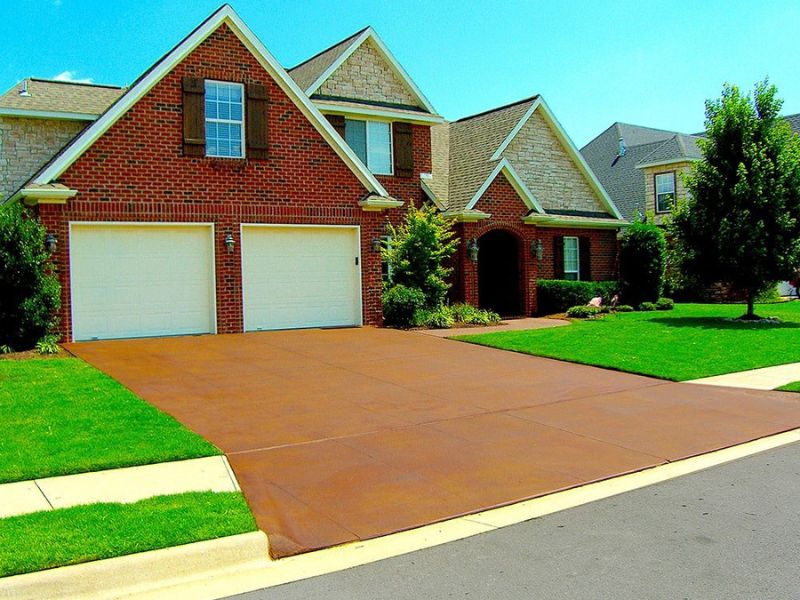
Driveway paint isn't your ordinary household paint. These specialist coatings are formulated specifically for concrete surfaces that endure constant traffic, weather exposure, and chemical spills. When we talk about painting concrete, we're actually referring to applying a protective coating system that serves multiple purposes beyond aesthetics. It’s also where the question often arises: is it better to paint or stain outdoor concrete?—a consideration that depends on the surface’s intended use, environmental exposure, and maintenance preferences.
Modern concrete paint formulations include acrylic resins, polyurethane compounds, and specialized additives that create a durable barrier. These coatings resist oil stains, provide UV protection, and can actually strengthen the surface structure of aging concrete. The paint's ability to penetrate the concrete surface creates superior adhesion compared to standard paints.
Professional-grade concrete driveway paint typically contains anti-slip additives, ensuring safety during wet conditions. This feature is particularly important in the UK climate, where moisture is a constant concern. The formulation also includes anti-fungal properties that prevent moss and algae growth, common problems on untreated concrete surfaces.
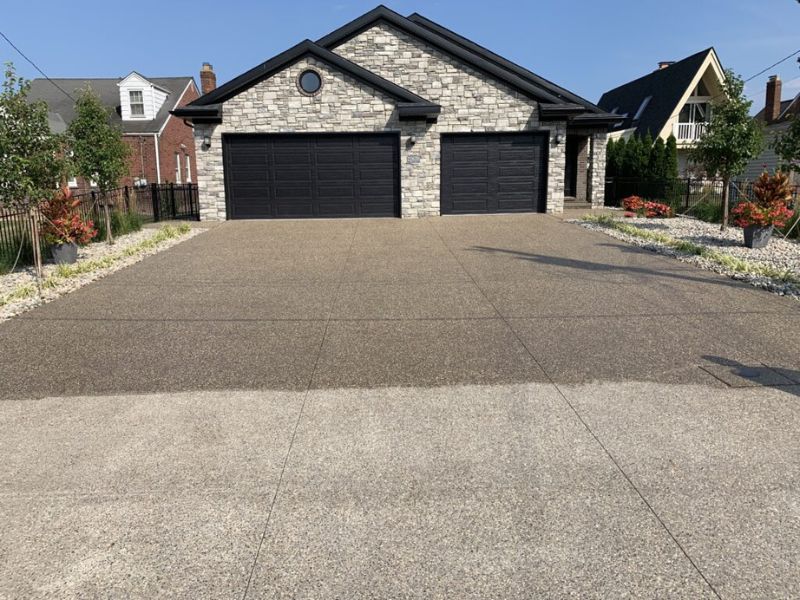
A freshly painted concrete driveway dramatically improves your home's curb appeal. According to recent studies, a well-maintained driveway can boost overall property value by 5-10%, particularly in suburban UK homes. This return on investment makes driveway painting one of the most cost-effective home improvements available.
The transformation is immediate and striking. Where you once had a grey, stained, or patchy concrete surface, you'll have a uniform, attractive finish that complements your property's aesthetic. The ability to choose from various colours means you can coordinate with your home's exterior paintwork or landscaping design.
UK weather conditions are particularly harsh on unprotected concrete surfaces. The constant cycle of wet and dry conditions, combined with freeze-thaw cycles, causes concrete to deteriorate rapidly. In our climate, untreated concrete or tarmac driveways often show visible deterioration including fading, oil stains, moss, and micro-cracks in as little as 2-5 years.
Concrete paint acts as a protective barrier against these elements. The coating prevents water penetration, which is the primary cause of freeze damage in winter months. UV resistant paints also prevent the concrete from becoming chalky and brittle from sun exposure.
Driveway painting costs up to 70% less than full driveway replacement. While a complete concrete driveway replacement might cost several thousand pounds, painting typically ranges from £500 to £1,500, depending on size and preparation work required. This significant cost savings makes it an attractive option for budget-conscious homeowners.
The painting project can often be completed in a single day, making it one of the fastest home improvement projects for visible impact. Compare this to the disruption and expense of tearing out and replacing an entire driveway, which can take weeks and cost significantly more.
One of the most compelling reasons to paint a driveway is the protection it provides against oil stains and other automotive fluids. Oil drips and fuel spills soften tarmac driveways and stain concrete permanently. A painted surface creates a barrier that prevents this chemical erosion and makes cleanup much easier.
Regular cleaning becomes simpler with a painted surface. Where oil stains might penetrate untreated concrete permanently, they can often be cleaned from painted surfaces with basic cleaning products. This ease of maintenance keeps your driveway looking fresh for years longer.
Epoxy paint represents the premium option for concrete driveway coating. These two-part systems create an extremely durable finish that can withstand heavy traffic and harsh weather conditions. Epoxy coatings typically last 5-10 years when properly applied with adequate surface preparation.
The application process requires precise mixing of resin and hardener components, making professional installation advisable for best results. Epoxy systems provide excellent paint adhesion and create a semi-gloss finish that's both attractive and easy to clean. However, they can become slippery when wet unless anti-slip additives are incorporated.
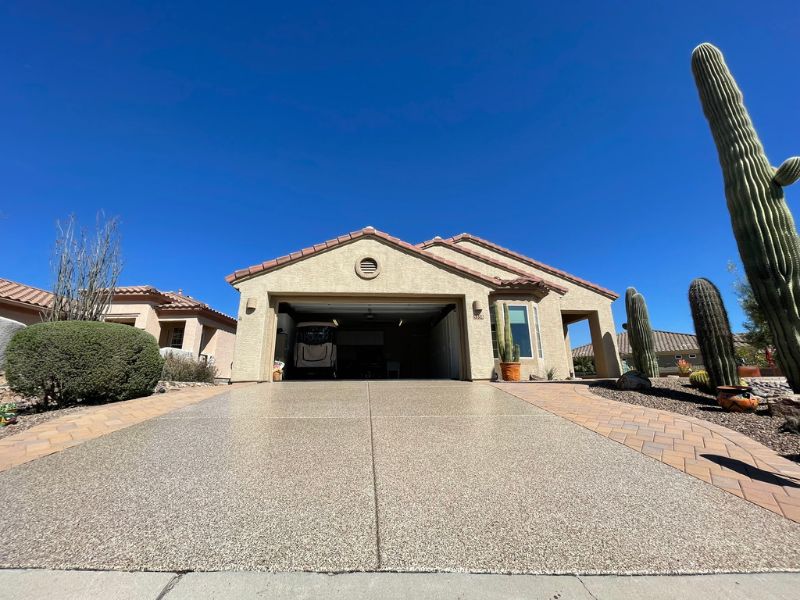
Acrylic-based concrete paint offers an excellent balance of durability, ease of application, and cost-effectiveness. These water-based formulations provide good weather resistance while being more environmentally friendly than solvent-based alternatives. Many modern acrylics are now low-VOC formulations, making them safer for pets and children.
Acrylic paints generally require two coats for optimal coverage and durability. The first coat penetrates the concrete surface, while the second coat provides the protective barrier and colour. Proper adhesion depends heavily on surface preparation and primer application.
Some products combine sealing properties with light colouring, offering protection while maintaining a more natural concrete appearance. These products excel at preventing water damage and staining while avoiding the fully painted look that some homeowners prefer to avoid.
Concrete sealers often include micro-porous properties, allowing for better water evaporation while reducing moss and algae buildup. This creates a less slippery surface during UK winters, improving safety around your property.
Proper preparation accounts for 80% of a successful painting project. The concrete surface must be thoroughly cleaned to remove all dirt, oil stains, moss, and previous coatings. We typically begin with pressure washing using appropriate cleaning solutions to remove surface contaminants.
Stubborn stains may require specialized degreasers or even mechanical removal. Oil stains that have penetrated deeply into the concrete need particular attention, as paint will not adhere properly over contaminated areas. A wire brush or mechanical scrubber may be necessary for heavily soiled areas.
Deep cleaning should be followed by adequate drying time. Concrete surfaces must be completely dry before paint application, which may require several days in humid conditions. Moisture trapped beneath the paint will cause adhesion failure and premature peeling paint.
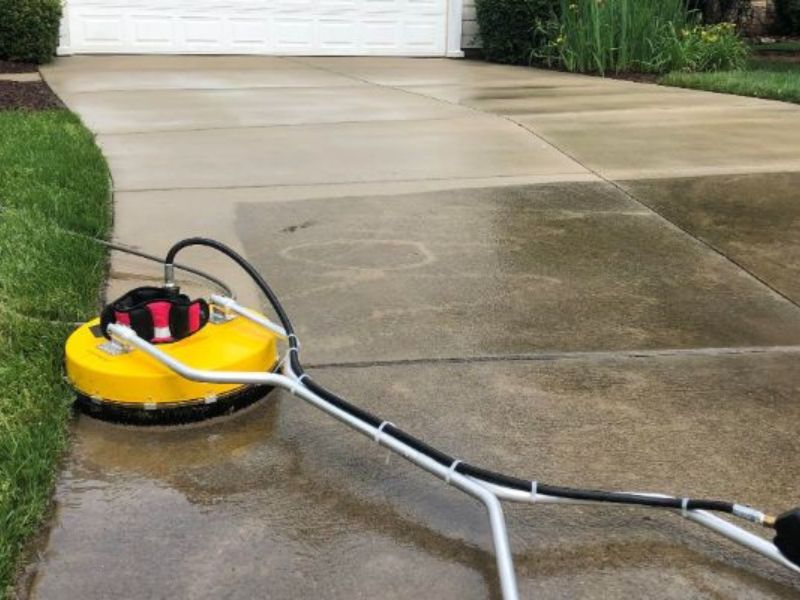
Any cracks or significant surface imperfections should be repaired before painting. Small cracks can often be filled with concrete repair compound, while larger issues may require professional assessment. The goal is creating a uniform surface that will accept paint evenly.
Rough surfaces may need light grinding or etching to create better paint adhesion. Conversely, very smooth surfaces might require roughening to provide adequate texture for the coating to grip. Professional assessment helps determine the right approach for your specific concrete surface.
Expansion joints should be cleaned and properly sealed. These deliberately created gaps in concrete prevent cracking but need appropriate treatment to prevent water infiltration while maintaining their flexibility.
Most concrete surfaces benefit from primer application before the final paint system. Concrete primers improve paint adhesion significantly and help ensure uniform colour coverage. The primer also helps seal the porous concrete surface, preventing the topcoat from soaking in unevenly.
Different primers work better with different paint systems. Epoxy paints often require specific epoxy-compatible primers, while acrylic systems may use water-based primers. Using compatible primer and paint systems ensures optimal performance and longevity.
Weather conditions during application are crucial. Ideal conditions include temperatures between 10-25°C with low humidity and no rain forecast for at least 24 hours after application. Applying paint in poor conditions virtually guarantees adhesion problems and early failure.
Professional results require proper tools and equipment. Essential items include high-quality rollers designed for textured surfaces, brushes for detail work, and paint sprayers for large areas. The choice between roller application and spray application depends on the specific paint system and surface texture.
Protective equipment is essential when working with concrete paints and sealers. Proper ventilation, protective clothing, and eye protection should always be used. Some paint systems require respiratory protection during application and curing.
A pressure washer proves invaluable for surface preparation, while a wire brush helps remove stubborn debris from textured areas. Having adequate lighting for evening work or cloudy conditions ensures you don't miss any spots during application.
The first coat serves as both primer and base layer in many systems. Application should be systematic, working in manageable sections to maintain a wet edge throughout the process. This prevents lap marks and ensures uniform coverage across the entire driveway.
Pay particular attention to edges and detailed areas where paint tends to apply more heavily. These areas often show brush marks or colour variations if not carefully managed. Smooth application techniques and proper material distribution prevent these common issues.
Temperature and humidity affect the drying process significantly. Too much heat causes the paint to set too quickly, preventing proper leveling. Excessive humidity slows curing and can cause surface defects. Monitoring conditions and adjusting application timing accordingly improves results.
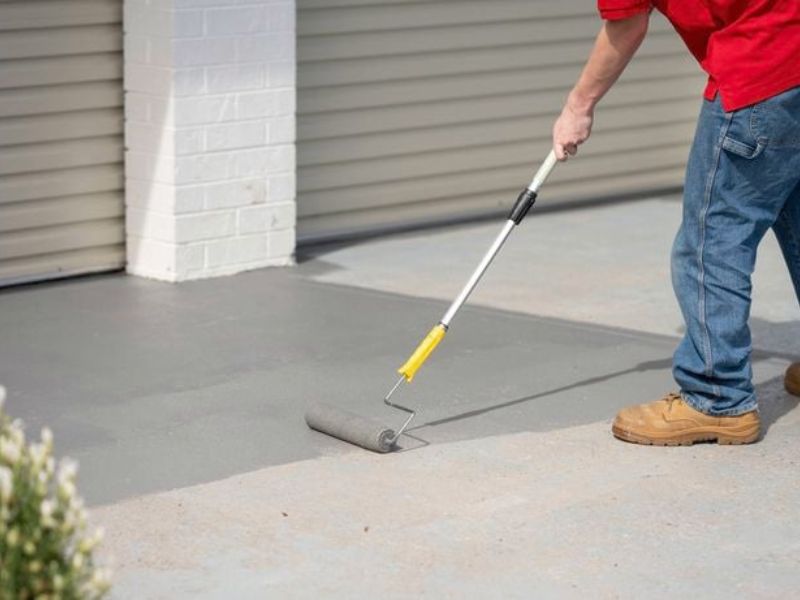
Most concrete paint systems require multiple coats for optimal performance and appearance. The second coat provides the primary protective barrier and determines the final colour and finish quality. Timing between coats is critical - too soon and the base coat may lift, too late and adhesion between coats suffers.
Different paint types have varying recoat windows. Some products must be recoated within specific time frames, while others can be recoated anytime after initial cure. Following manufacturer specifications ensures proper coating performance.
Even with careful first coat application, the second coat often reveals areas that need additional attention. Touch-up work should be completed before the final coat fully cures to avoid visible repair marks.
UK weather presents unique challenges for driveway painting projects. Sudden rain showers can destroy freshly applied coatings, while high humidity slows curing times dramatically. Planning around weather forecasts becomes essential for success.
Hot tire pick up occurs when vehicles are parked on newly painted surfaces before full cure is achieved. This problem is particularly common during warm weather when tire rubber becomes soft. Proper curing period observation prevents this costly mistake.
Cold weather extends drying times and may prevent proper paint flow and leveling. Some paint systems cannot be applied below certain temperatures, making winter application impractical in many UK regions.
Poor paint adhesion typically results from inadequate surface preparation. Contaminants left on the concrete surface prevent the paint from bonding properly, leading to peeling paint within months of application. Thorough cleaning and preparation prevent most adhesion issues.
Moisture-related adhesion failure occurs when concrete contains excessive moisture during paint application. Even properly cleaned surfaces may have internal moisture that interferes with adhesion. Adequate drying time and moisture testing help avoid this problem.
Previously sealed concrete surfaces may resist new paint adhesion. Some sealers create a barrier that prevents paint penetration, requiring mechanical removal or specialized bonding agents for successful coating.
Achieving uniform colour across large concrete surfaces requires careful material management and application techniques. Variations in concrete porosity, temperature, and application thickness can create colour variations that become obvious once the project is complete. At this stage, many homeowners begin to wonder what is the best colour to paint a driveway?—a decision that not only affects visual appeal but also how well the colour hides dirt, stains, and wear.
Coloured concrete paint may fade unevenly if not properly formulated for UV exposure. Using UV resistant paints and following recommended application procedures helps maintain colour consistency over time. Some colours are naturally more fade-resistant than others.
Surface texture affects final appearance significantly. Rough surfaces may appear darker due to shadow effects in the texture, while smooth surfaces show colours more intensely. Understanding these effects helps set appropriate expectations for the finished project.
Maintaining a painted concrete driveway requires regular cleaning to preserve appearance and extend coating life. Monthly washing with mild detergent and water removes most surface contaminants before they can cause staining or coating degradation.
Pressure washing should be done carefully to avoid damaging the painted surface. Use appropriate pressure settings and wide spray patterns to clean effectively without eroding the coating. Avoid using pressure washers with rotating or turbo nozzles on painted surfaces.
Immediate cleanup of oil spills and other automotive fluids prevents staining and potential coating damage. While painted surfaces resist staining better than untreated concrete, prompt attention to spills ensures the longest possible coating life.
Minor damage to painted concrete surfaces can often be repaired with touch-up paint applications. Keep leftover paint for repairs, ensuring colour matches remain accurate. Proper surface preparation for touch-ups is just as important as for the original application.
More extensive damage may require section repainting or complete recoating. Assessing damage extent helps determine the most cost-effective repair approach. Sometimes spot repairs are more expensive than complete refinishing due to colour matching difficulties.
When professionally applied with proper surface preparation and quality materials, driveway paint can last 5–10 years with routine maintenance. Environmental conditions, traffic levels, and maintenance quality all affect coating longevity.
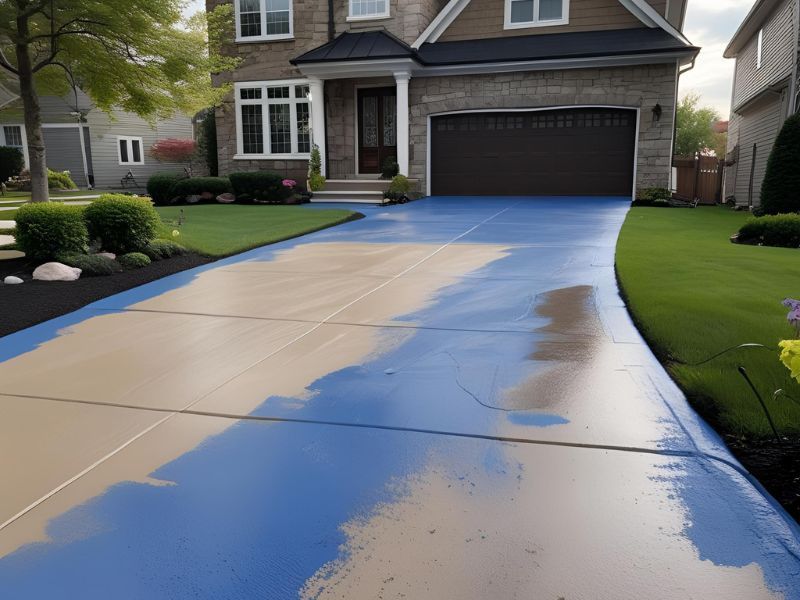
UK seasonal changes require adjusted maintenance approaches. Winter conditions with road salt, freeze-thaw cycles, and increased moisture exposure place additional stress on concrete paint systems. Post-winter inspection and cleanup help identify and address any damage early.
Summer heat and UV exposure can cause premature coating degradation if the paint lacks adequate UV protection. Providing some shade or using UV-resistant formulations helps extend coating life in high-exposure areas.
Spring cleaning should include thorough inspection for winter damage, crack development, or coating adhesion issues. Early identification and repair of problems prevents more extensive damage and maintains the appearance of your painted surface.
Professional driveway painting costs vary based on surface size, condition, and coating system selected. How much does it cost to paint a driveway? Basic acrylic systems typically cost less than epoxy coatings but may require more frequent reapplication. Understanding the total cost of ownership helps make informed decisions.
DIY application can reduce costs significantly but requires proper equipment, materials, and technique knowledge. Mistakes in preparation or application often cost more to correct than professional installation would have cost initially. Consider your skill level and available time carefully.
Additional costs may include surface repairs, primer, specialized cleaning chemicals, and equipment rental. These items can add significantly to project costs but are essential for professional results. Budgeting for complete project requirements prevents unpleasant surprises.
The investment in driveway painting provides returns through improved property value, reduced maintenance costs, and enhanced appearance. Compared to other exterior improvements, driveway painting offers excellent return on investment for the cost involved.
Cost savings compared to driveway replacement are substantial. While painting provides a different result than new concrete installation, the appearance improvement and protection benefits often meet homeowner needs at a fraction of replacement cost.
Preventive maintenance through painting extends the life of the underlying concrete surface. How long should a painted driveway last? This protection delays expensive replacement or major repair work, providing ongoing value for years after the initial investment.
Successful concrete driveway painting requires specific knowledge of surface preparation, material compatibility, and application techniques. While not impossible for DIY enthusiasts, the learning curve can be steep and mistakes costly to correct.
Proper equipment makes a significant difference in results quality. Professional painters have access to specialized tools, sprayers, and surface preparation equipment that may not be cost-effective for single-use purchase by homeowners.
Understanding material specifications, mixing procedures, and application timing prevents many common problems. Professional experience helps identify potential issues before they become expensive mistakes.
Complete driveway painting projects typically require several days when accounting for cleaning, preparation, primer application, and multiple paint coats. Each step must cure properly before proceeding, making project timing crucial.
Weather delays can extend DIY projects significantly, particularly in the UK climate. Professional painters often have more flexibility to work around weather conditions and complete projects efficiently.
The physical demands of thorough surface preparation and paint application across large areas shouldn't be underestimated. Professional teams can complete projects faster with less physical strain on homeowners.
Professional installation typically includes workmanship warranties and guarantees on material performance. These protections provide peace of mind and recourse if problems develop with the finished coating.
Access to professional-grade materials and bulk purchasing often means better products at lower per-unit costs. Professional painters also understand which products work best in specific conditions and applications.
Technical support and troubleshooting assistance are valuable benefits of professional installation. If problems arise, experienced contractors can diagnose and correct issues efficiently.
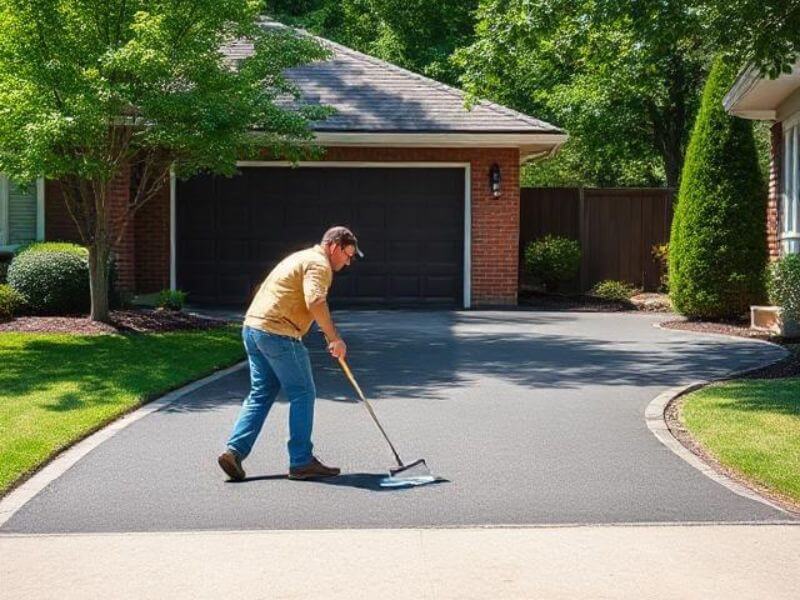
Modern concrete paint formulations increasingly include environmentally responsible options. Water-based acrylics with low VOC content reduce environmental impact while providing good performance characteristics. These formulations are safer for application around plants, pets, and water sources.
Some manufacturers now offer recycled content in their concrete coatings, contributing to waste reduction and sustainability goals. While performance remains the primary consideration, environmental benefits provide additional value for conscious consumers.
Proper disposal of leftover materials and containers is essential. Many paint retailers offer recycling programs for unused paint and empty containers. Following local disposal guidelines prevents environmental contamination.
Concrete painting involves exposure to chemical vapors, dust, and cleaning agents that require appropriate safety measures. Adequate ventilation, protective equipment, and safe handling procedures protect both applicators and building occupants.
Lead paint considerations apply to older concrete surfaces that may have been previously painted. Testing and appropriate handling procedures are essential when working with surfaces that might contain lead-based coatings.
Chemical compatibility between cleaners, primers, and paints must be considered to prevent dangerous reactions. Reading and following all material safety data sheets ensures safe handling and application procedures.
Concrete staining provides colour while maintaining the natural texture and appearance of concrete. Acid stains create unique, variegated effects that many find more attractive than solid paint colours. Stains penetrate the concrete surface rather than coating it, providing a different aesthetic.
Water-based concrete stains offer more colour options and easier application than acid stains. These products provide good durability while being more environmentally friendly and safer to apply.
Staining typically costs less than painting but may not provide the same level of protection against staining and wear. The choice between staining and painting depends on priorities for appearance versus protection.
Concrete resurfacing involves applying a thin new concrete layer over the existing surface. This approach can address significant surface damage while providing a fresh appearance. Resurfacing costs more than painting but less than complete replacement.
Decorative overlays can create the appearance of natural stone, brick, or other materials at a fraction of the cost of actual material installation. These systems provide excellent durability and unique aesthetic options.
Stamped concrete overlays can transform plain driveways into attractive, textured surfaces that complement any architectural style. While more expensive than painting, overlays provide different aesthetic possibilities and potentially longer service life.
Clear concrete sealers provide protection benefits without changing the concrete appearance. Do you need to seal concrete after painting? These products prevent staining and weather damage while maintaining the natural concrete colour and texture.
Penetrating sealers soak into the concrete surface to provide protection from within. These products don't change surface appearance but provide excellent protection against water damage and chemical staining.
Topical sealers create a protective film on the concrete surface. While more visible than penetrating sealers, they provide better stain resistance and are easier to renew when necessary.
Deciding whether painting a driveway is a good idea depends on your specific situation, budget, and goals. For most UK homeowners, the benefits significantly outweigh the costs and effort involved. A properly painted concrete driveway provides immediate visual improvement, long-term protection, and excellent return on investment.
The key to success lies in proper preparation, choosing appropriate materials, and following correct application procedures. Whether you choose DIY application or professional installation, understanding the process helps ensure satisfactory results that will enhance your property for years to come.
Consider your driveway's current condition, your budget constraints, and your long-term plans for the property. In most cases, driveway painting offers an excellent solution that addresses both aesthetic and protective needs at a reasonable cost.
If you're ready to transform your concrete driveway and boost your home's curb appeal, professional guidance ensures the best possible results. The investment in quality materials and proper application techniques pays dividends through improved appearance, protection, and property value.
Ready to discover how driveway painting can transform your property? Driveway Painting offers professional assessment, quality materials, and expert application to ensure your project exceeds expectations. Contact us today for your free, no-obligation quote and take the first step towards a beautiful, protected driveway that enhances your home's value and appeal.
Our experienced team will evaluate your concrete surface, recommend the best coating system for your needs, and provide transparent pricing for complete project completion. Don't let another season pass with a deteriorating driveway when an affordable solution is within reach.